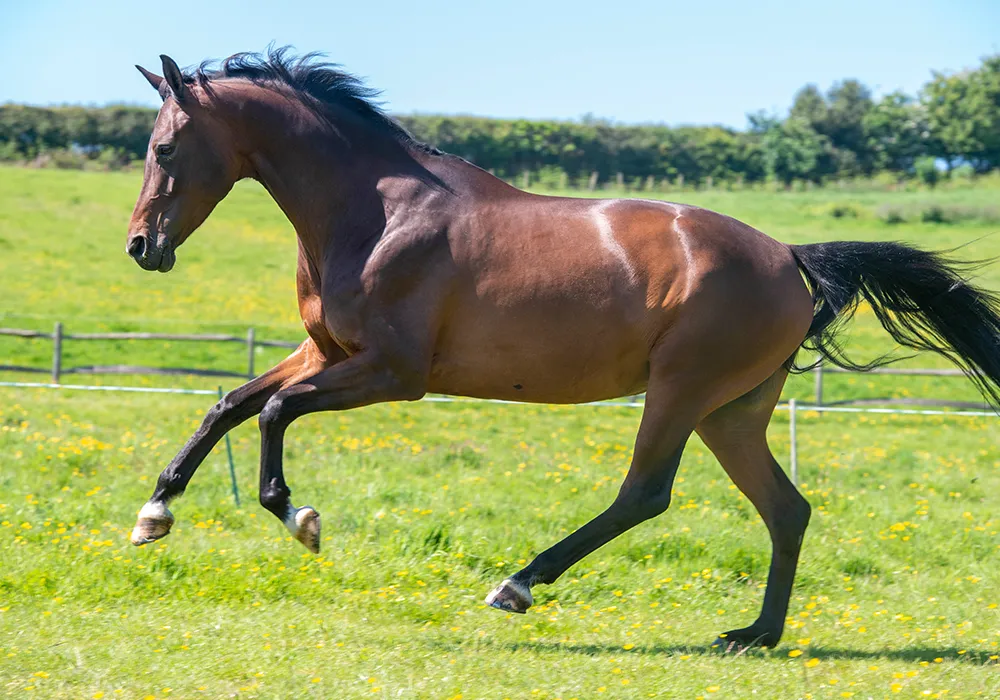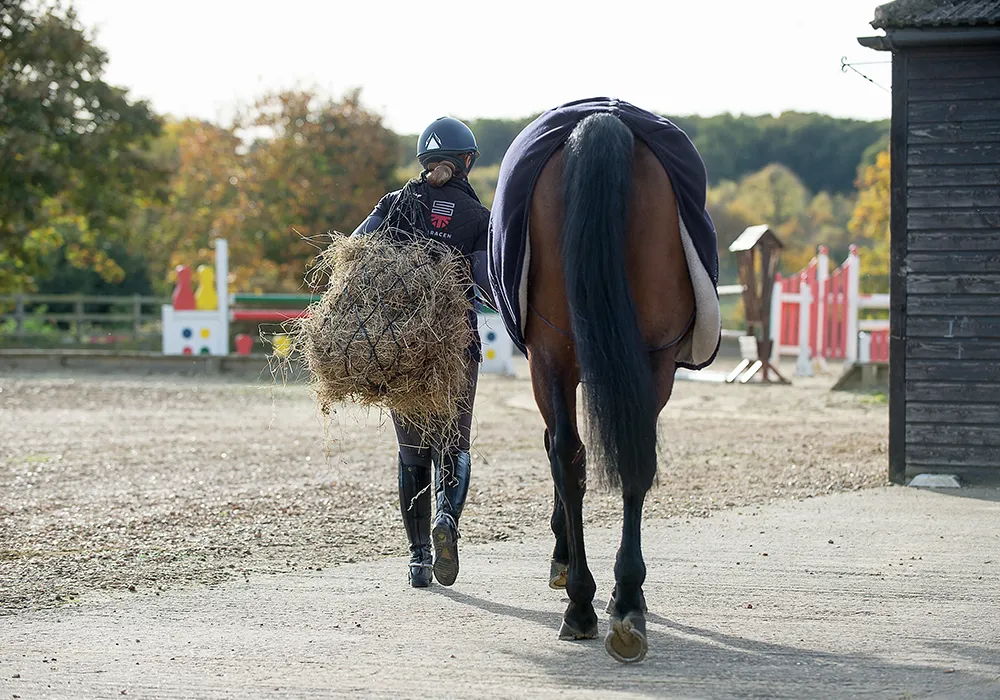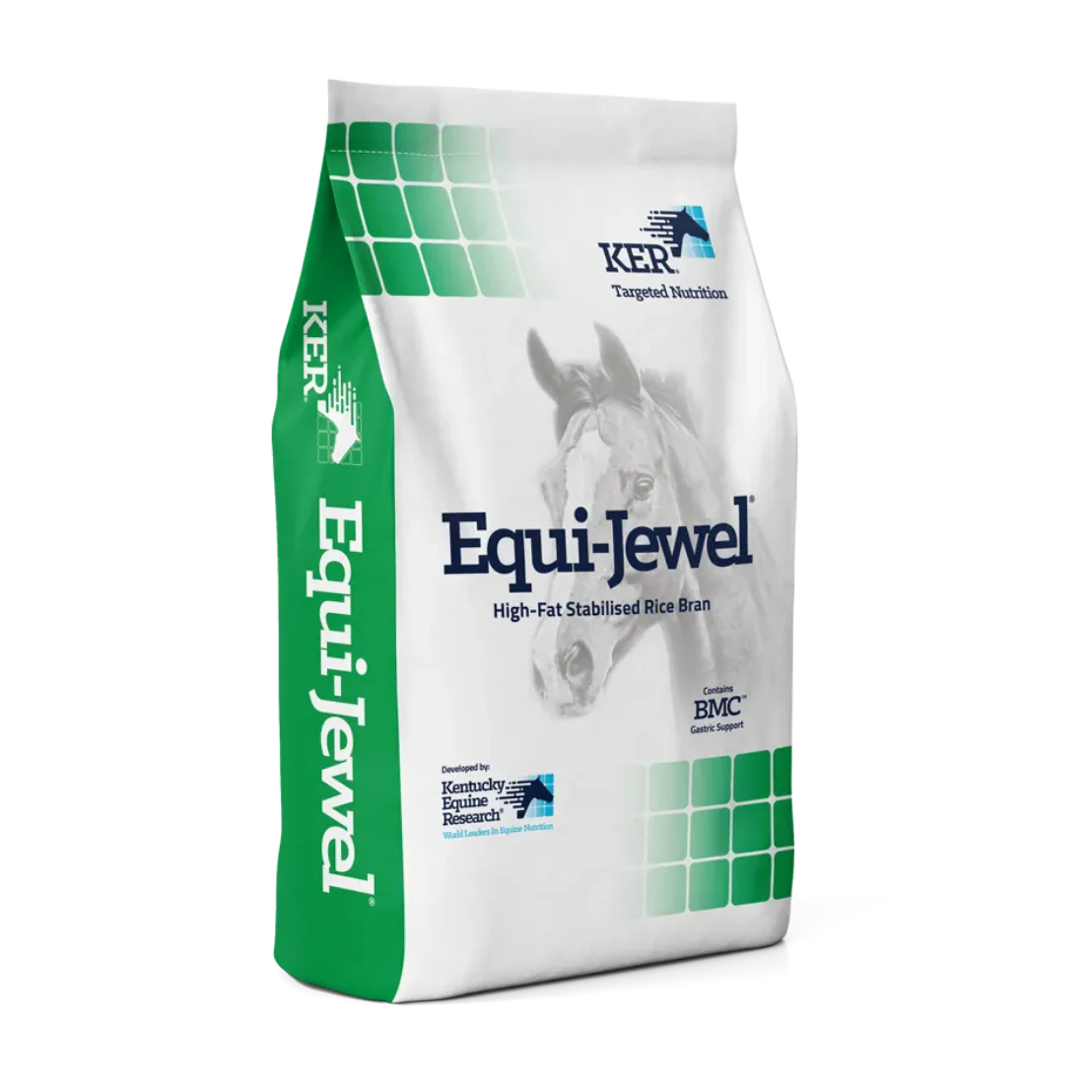Managing Metabolic Conditions in Horses

All types of horses and ponies can be affected by metabolic disorders, including Equine Metabolic Syndrome (EMS) and Pituitary Pars Intermedia Dysfunction (PPID), also known as Cushing’s Disease. These occur when a horse’s normal metabolic processes – how the body converts energy into fuel – go a bit off track.
Getting the diet right is key. Proper management of horses with equine metabolic disorders is essential to reduce the risk of laminitis, which is closely linked to metabolic issues. Whether your horse needs a low calorie diet or a low starch horse feed, the aim is the same: maintain body condition safely while supporting overall health. Let’s take a closer look at how to feed and manage these types of horses.
What Causes Metabolic Disorders in Horses?
If you’re managing a horse with a metabolic disorder, it helps to understand why it happened. Much like human diabetes, the causes can be genetic, environmental or a mix of both.
Some breeds, particularly UK native horses or Arabs, are naturally designed for sparse grazing and are more prone to equine metabolic disorders because they’re not built for the rich pastures that are common in domestic environments. On the other hand, overweight horses – regardless of breed – can also develop metabolic issues if their diet and lifestyle aren’t carefully managed.
Types of Metabolic Disorders
Metabolic disorders in horses can show up in a few different ways. Here are the top three you’re most likely to encounter:
Equine Metabolic Syndrome (EMS)
Equine Metabolic Syndrome, or EMS, typically shows as obesity, laminitis and insulin resistance (IR) and is most common in middle-aged horses. The exact cause isn’t fully understood, but genetics – sometimes called the ‘thrifty gene’ – are thought to play a role. Managing diet with additions like a low starch horse feed is crucial for affected horses.
Insulin Resistance (IR)
Insulin resistance occurs when a horse’s body doesn’t respond properly to insulin, the hormone that moves glucose from the blood into tissues. IR often goes hand-in-hand with EMS or Cushing’s disease and makes careful feeding with a low glycaemic, low sugar diet essential.
Cushing’s Disease (PPID)
Cushing’s disease, also called PPID or Pituitary Pars Intermedia Dysfunction, is caused by overgrowth in the pituitary gland and mostly affects older horses. Hormonal imbalances linked to PPID increase the risk of laminitis, partly due to insulin insensitivity. A feed suitable for controlling sugar and starch intake is key to keeping these horses healthy, alongside veterinary advice.
H2: The role of forage in the equine diet
When managing a horse at risk of laminitis or other metabolic disorders, it can be tempting to cut forage right back. While restricting intake is sometimes necessary, remember that horses must chew, both for their digestion and psychological needs. Take forage away completely, and you’ll soon face digestive upset, stress and unwanted behaviours.
Tips for Restricting Forage Safely
You can manage forage carefully without leaving your horse short. A few proven methods include:
- Muzzling for part of the day – this can reduce grass intake by up to 80% while still allowing steady trickle feeding.
- Splitting hay rations – use multiple small-holed haynets, hung in different spots around the stable, to extend eating time and encourage natural movement.
- Weighing hay – don’t guess. Even horses with metabolic issues must eat at least 1.5% of their bodyweight in forage daily to stay healthy.
Forage remains the backbone of every equine diet, even for horses on low starch, laminitis safe diets. You can read more about its importance in our dedicated forage blog. (link)
The Impact of Sugar and Starch
When it comes to managing metabolic disorders in horses, keeping an eye on sugar and starch — known as non-structural carbohydrates (NSCs) — is critical. To reduce the risk of issues such as laminitis, the NSC level of the total diet should sit around 10% or less. That means looking beyond what’s written on the feed bag and considering what’s coming from forage, which usually makes up the bulk of the ration.
Understanding NSCs in Forage
Forage contributes NSCs in two forms: sugar and fructan. While starch often gets the blame, the real concern in grass and hay is fructan. True starch usually comes from cereal grains and concentrates, but grass and hay can still tip the balance through their sugar and fructan content, plus it’s harder to control than bucket feeds.
It’s worth remembering that NSC levels in grass are never fixed. They change with the season, weather, time of day and growth stage. Conserved forage like hay or haylage is also variable, but soaking hay is a simple way to lower sugar levels.
Even when you’re feeding low starch horse feeds or products marketed as laminitis safe horse feeds, the forage portion of the diet can still make or break your management plan. Always think about the full picture, not just what’s in the feed scoop.
The best way to stay on top of things is with regular forage analysis, so you know exactly what’s going into your horse’s diet. For more detail, see our dedicated blog on forage analysis. (link)
Tips to Reduce Sugar and Starch Intake
- Know your forage – Grass, hay, and haylage provide most of the NSCs in the diet. In forage, the main culprit is fructan, not starch. A forage analysis (link) can help you with this.
- Time turnout wisely – Grass is lowest in NSCs overnight and in the early morning. Levels rise in sunny afternoons and after frosts.
- Soak hay before feeding – A 6–12 hour soak in cold water can significantly cut sugar levels.
- Choose low NSC feeds – Go for concentrates or balancers that are proven to be low in starch and sugar.
- Think total diet – Always add up NSCs from grass, hay, and hard feed combined to stay in safe limits.
Maintain a Balanced Diet
Some horses seem to hold their weight a little too well – these are your good doers. They don’t need much feed to stay in condition, but when you’re managing a horse with metabolic issues, it’s still vital to provide a fully balanced diet.
If forage has to be restricted for weight control, the missing nutrients must be replaced. That’s where a low-calorie balancer comes in. A product like our Essential Balancer supplies vitamins, minerals and quality protein without piling on unnecessary calories or starch – the ideal choice for good doers prone to laminitis or other metabolic disorders.
For more advice, see our dedicated blog on feeding the good doer (link)
Feeding Horses with Metabolic Disorders
Managing horses with metabolic disorders takes knowledge, patience and the right diet. Whether you’re dealing with Equine Metabolic Syndrome, insulin resistance, or Cushing’s disease, the golden rule is to keep starch and sugar low, while never compromising on fibre. Forage remains the backbone of every ration, and choosing the right laminitis safe horse feed or low starch balancer can make all the difference. Be sure to consult and work alongside your vet to keep your horse’s metabolic condition under control, too.
Managing Metabolic Conditions in Horse FAQs
What are some early signs of EMS in horses?
Early signs of Equine Metabolic Syndrome (EMS) include abnormal fat deposits (cresty neck, fat pads behind shoulders or tailhead), weight gain despite restricted feed, and increased risk of laminitis. If you spot these changes, seek veterinary advice and review the diet immediately.
How can you reduce insulin levels in horses naturally?
To lower insulin levels in horses naturally, provide a high-fibre, low-starch and low-sugar diet. Soaked hay, controlled turnout and a specialist balancer like Saracen Essential Balancer support nutrient needs without excess calories. Regular exercise also helps improve insulin sensitivity.
How to prevent EMS in horses?
Prevention relies on careful weight management, especially in native and good doer types. Feed forage at around 1.5% of bodyweight, avoid cereal-based feeds and add a low-calorie feed such as Shape-Up™ to ensure vitamins and minerals are covered. Routine body condition scoring and forage analysis are also key. (link)
Note about “laminitis-safe” usage
You might see some brands describe feeds as “laminitis-safe”, but in reality, no feed can guarantee that. What matters most is choosing a diet suitable for laminitis-prone horses and carefully managing overall sugar and starch intake.
Seeking advice or have questions about “laminitis-safe” products or feeding laminitis-prone horses? Our nutrition team (link) can help guide you.
Further Reading:
- How to choose the best forage for your horse
- Forage Analysis for Horses Explained
- Feeding the Good Doer Horse











